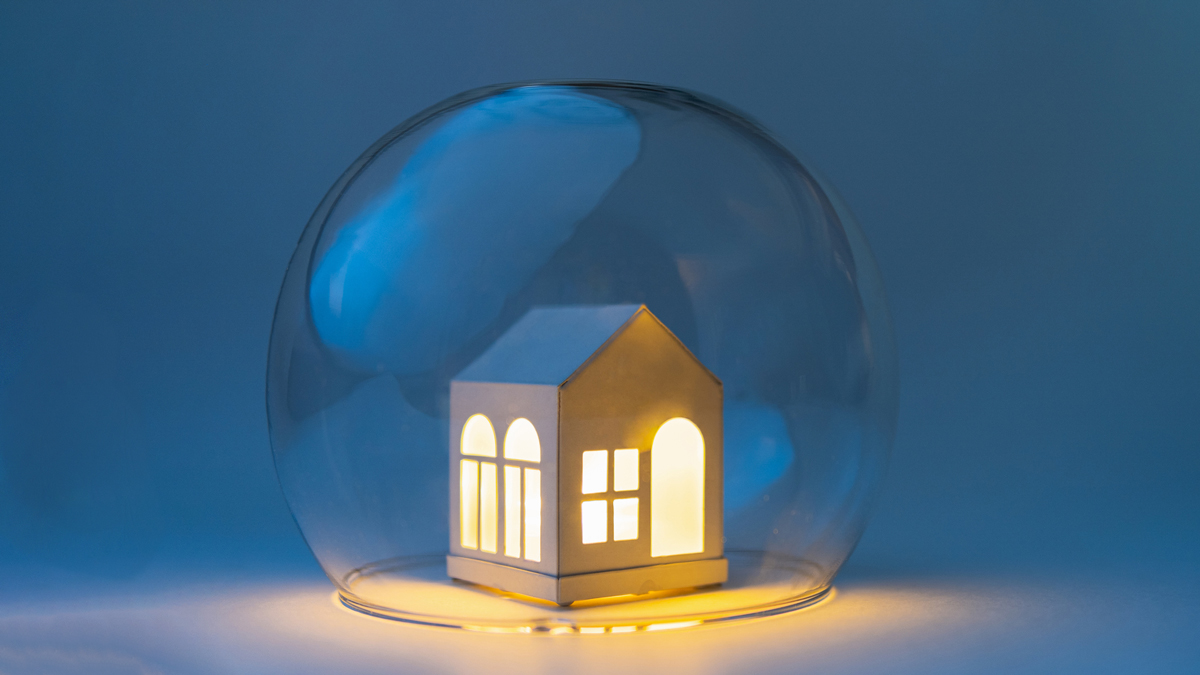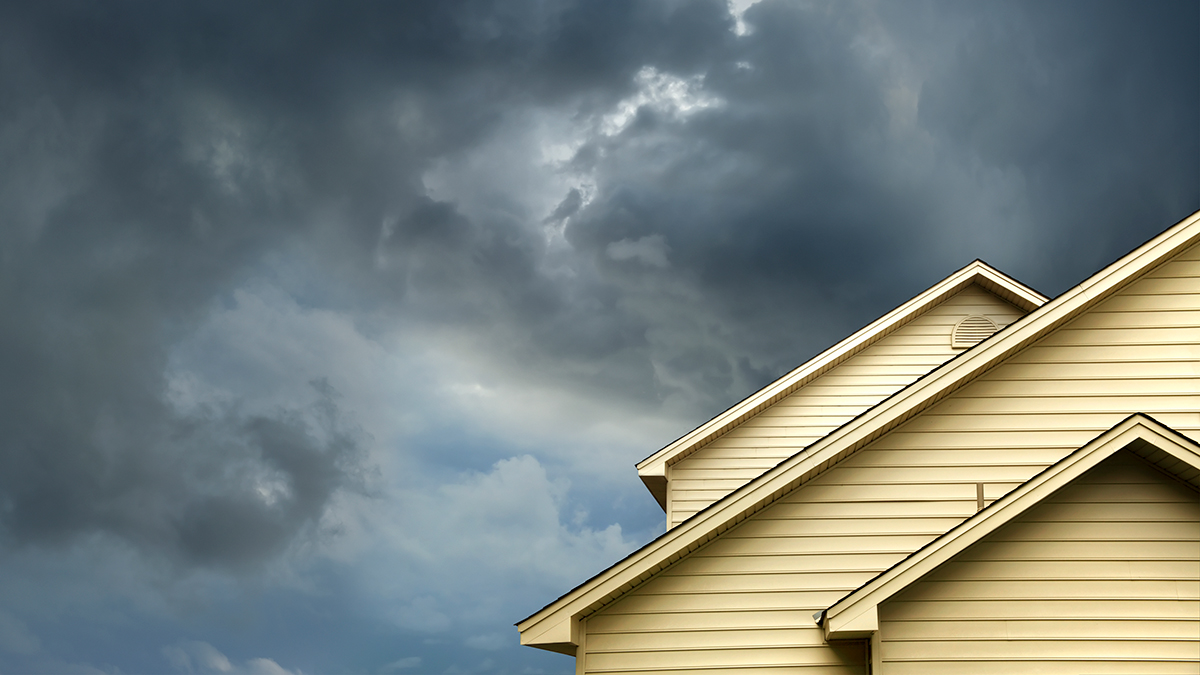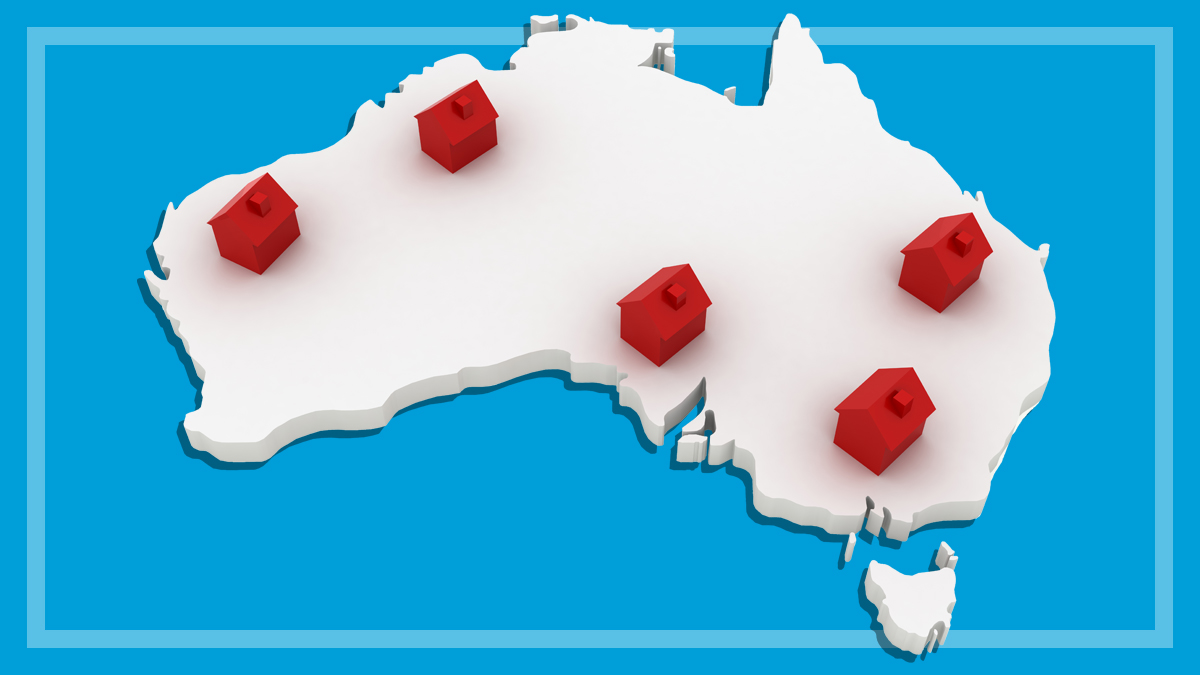Get our independent lab tests, expert reviews and honest advice.
Does your insurance cover your house for storm damage?
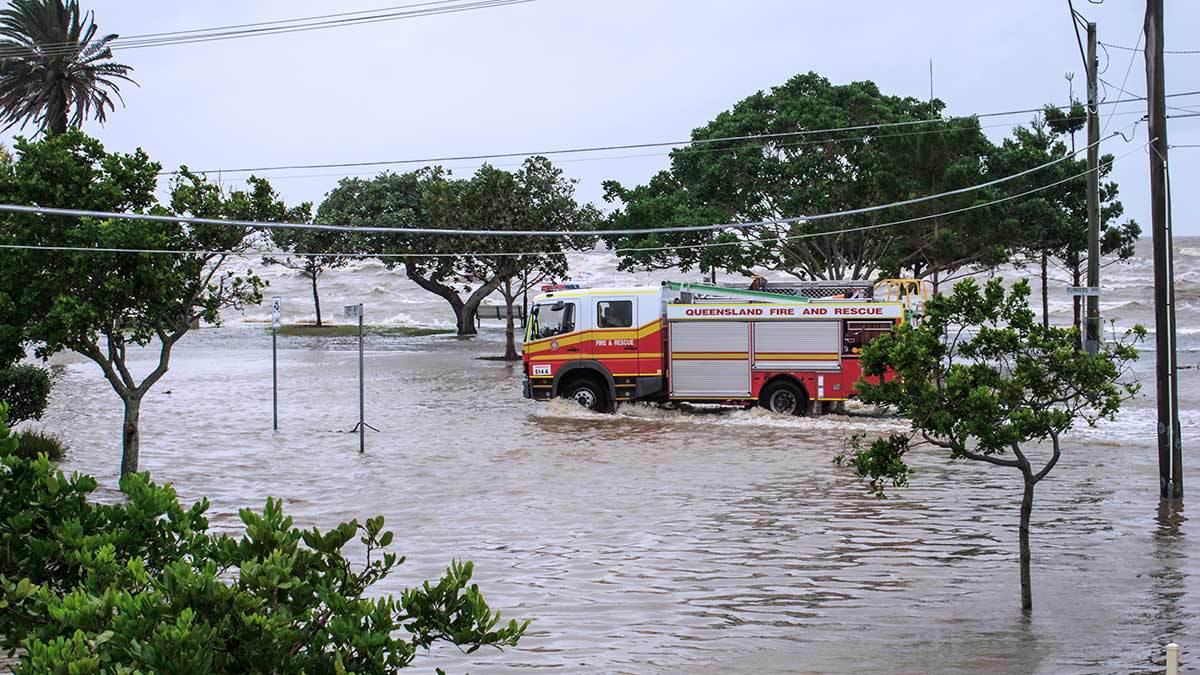
Storms, hurricanes and cyclones are all major weather events that can’t be avoided, which is why insurance companies include them in their policies.
On this page:
- Does my home insurance policy cover storm damage?
- Will I pay more if I live in a storm-prone area?
- When is storm season?
- How has climate change affected storms?
- What should I do to prepare my home for storm season?
- Caught in a storm? Here's what to do
- Sally's story: "It's worthwhile standing your ground"
But not all insurance plans are equal. Some offer more generous coverage in the event of a storm. Others have quite narrow definitions of what a storm actually is.
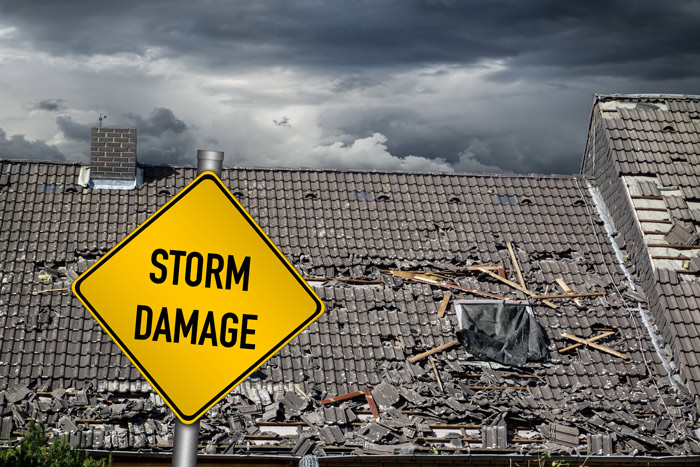
Does my home insurance policy cover storm damage?
All insurers cover storm and cyclone damage to your property, says CHOICE home insurance expert Daniel Graham. But not all policies cover loss or damage caused by a storm surge, flood, or action of the sea. This is why you should read your product disclosure statement (PDS) thoroughly – so you know exactly what you are and aren’t covered for.
And while there’s a standard definition of what a flood is, there’s no such definition for a storm, so different insurance companies have their own interpretations. Your PDS will explain which events you’re covered for, and how they’re defined. Again, read it carefully to make sure you have the right type of cover for where you live and the type of property you’re insuring.
Not all policies cover loss or damage caused by a storm surge, flood, or action of the sea
Graham says the insurance industry is in discussions about producing a standard definition of a storm, but that “there’s a lot of stakeholders involved … so I can’t imagine that actually happening for the next couple of years”.
But there are standard practices, too. For instance, all insurers cover damage from lightning strikes, and most cover damage from a power surge as a result of lightning (although they may exclude surges that the power provider was responsible for).
Some insurers also cover for spoiled food if power is cut off. So if your fridge loses power, you might be able to claim about $500 to replace food you had to throw out.
“Another thing to look at is how your contents insurance covers you for items in the open air, so outdoor furniture and your barbecue, for example,” Graham says.
“If those things get damaged in a storm, it’s possible you’ll have lower benefits than if they were damaged another way.”
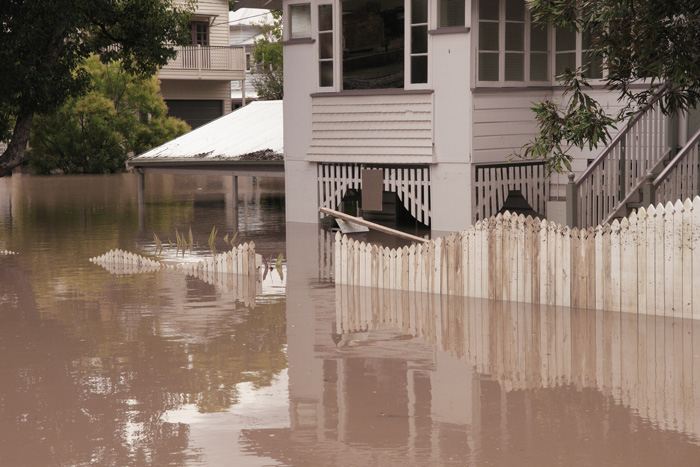
Will I pay more if I live in a storm-prone area?
People who live in northern Australia will pay more for their premiums because of the higher likelihood of storms and cyclones, according to Graham.
“Insurance pricing certainly does reflect differences between regions,” he says. “While the actual products themselves are the same for someone who’s living in Victoria as in Queensland, the risks those properties face will be different and insurers will price people differently.”
People who live in northern Australia will pay more for their premiums because of the higher likelihood of storms and cyclones
In 2017, the rising costs of home insurance premiums in these regions prompted the Australian Competition and Consumer Commission (ACCC) to launch an investigation into insurance affordability and availability across northern Australia.
The ACCC released an interim report earlier this year, which found that by adjusting their technical premiums in high-risk areas, “insurers can reduce the number of customers they have in a particular area or who they assess to be higher risk”, and that this adds to the “affordability issues caused by the high risk of the area”.
The report also recommends that standardised definitions of events, such as storms, be created for all insurers. The final report is due for release in November 2020.
When is storm season?
Thunderstorms can happen anywhere, at any time. But Australia does have several defined storm seasons, when the frequency and associated risks go up.
Northern Australia (including parts of Queensland, WA and the Northern Territory) is a cyclone-prone area, so the risks policyholders face are different from those in other parts of the country.
The Bureau of Meteorology (BOM) says peak storm season is between November and April, and that the northwest Australian coastline between Broome and Exmouth is the most likely to be affected.
In other parts of Australia, the worst storms tend to strike between September and March.
How has climate change affected storms?
Researchers have modelled how climate change has affected the severity of some storms: researchers from Berkeley, California, studied the intensity of three major recent US storms – hurricanes Katrina, Irma and Maria – and found that rainfall had increased by up to 10% compared with similar storms during pre-industrial conditions. This is because, on average, the world has warmed by 1°C since 1900.
“We found that, relative to pre-industrial conditions, climate change so far has enhanced the average and extreme rainfall of hurricanes Katrina, Irma and Maria, but did not change tropical cyclone wind-speed intensity,” said the researchers.
According to BOM meteorologist Jonathan How, a 2018 report between BOM and CSIRO on the state of the climate said that climate change is expected to bring possibly fewer, or about the same number of tropical cyclones in the Australia region.
“However, of these, there will likely be a greater proportion of more intense tropical cyclones,” he says.
Climate change so far has enhanced the average and extreme rainfall of hurricanes Katrina, Irma and Maria
When it comes to insurance, Lisa Kable, spokesperson for the Insurance Council of Australia, says climate change isn’t a factor that insurers consider when calculating premiums – yet.
“Insurers only look towards the next 12 months at any given time,” she says. “The impacts of climate change are more long-term at this stage, so at the moment climate change isn’t impacting on premiums.”
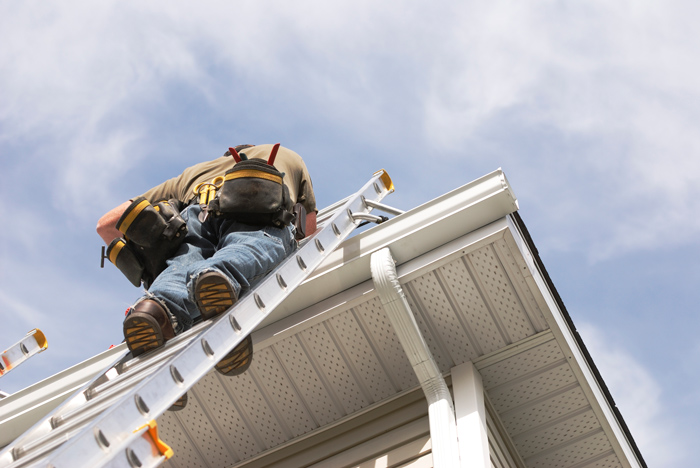
What should I do to prepare my home for storm season?
It’s not just where you live that has a big impact on whether you face severe storms – the design and build of your home play big roles too.
All houses and apartments must comply with the Building Code of Australia, but research shows that homes built after 1980 withstand the impact of storms better.
Nevertheless, storms can still cause serious forms of damage. Daniel Graham lists some of the most common as smashed windows, torn-off roofs, shattered solar panels, overflowing gutters, flooding and power surges.
Some storm claims can be denied depending on how well you maintain your property
While storm is a standard cover, some storm claims can be denied depending on how well you maintain your property, Kable cautions.
“For example, if your roof is 20 years old and hasn’t been maintained, and windows aren’t sealing properly or the gutters are full of debris, that’s a maintenance issue and it could be cause for your claim to be rejected,” she says.
1. Check your roof
Kable says having your roof inspected every two years to ensure tiles haven’t lifted or are out of place is important – as is checking your roof for integrity after hail or strong winds.
2. Care for your gutters
Checking the condition of gutters and downpipes should also be part of your regular maintenance cycle, according to Kable. How often will depend on where you live and how many trees there are around your property.
Look out for signs of corrosion, clear gutters of leaves and other debris, and make sure there are no blockages in downpipes. Kable recommends trimming back branches from nearby trees, but check with your local council first.
She also says you should check that your window seals are doing their job and that any eaves are in good condition, as sheeting rain can enter windows horizontally.
3. Long-term improvements
Graham says there are some longer term options to help protect your property that might be worth investing in, especially for people who live in northern Australia.
“You can install storm shutters, install metal screens on your windows and you can upgrade your roof if you live in an older house to make it more resilient to those types of winds and the damage that might be caused,” he says.
“One of the benefits of doing that is that some insurance companies will take that into account when assessing your risk and premiums.”
Upgrade your roof if you live in an older house to make it more resilient
Graham picks out Suncorp and RACQ as two insurers that have programs in place to do just that, but adds that it’s something all insurance companies should be doing.
“It needs to happen because of the increasingly large cost of insuring homes in those areas,” he says.
“If your insurer isn’t acknowledging the investment you’ve put into your property when calculating your premium, I would certainly recommend shopping around for an insurer who will.”
4. Put together an emergency plan
Look up your state emergency service (SES) to get a checklist on how to prepare for a storm, including how to put together an emergency plan.
- New South Wales SES
- NT Police, Fire and Emergency Services
- Queensland SES
- South Australia SES
- Tasmania SES
- Victoria SES
- Western Australia SES
Caught in a storm? Here’s what to do
Most of the damage that storms do to homes in Australia comes from strong wind.
But storms can inflict all kinds of damage to a property, including:
- hail damage – including cracks, holes and dents to roofs, skylights, windows and motor vehicles
- tree and branch falls
- water damage from blocked gutters and downpipes
- rainwater in roof and wall cavities, driven there by wind
- water damage from storm runoff.
There are some simple steps you should take in the aftermath of a storm.
“The first thing to do is make sure that you and the people around you, like your neighbours, are safe, figure out the extent of the damage to your own property and shut off utilities if it’s safe to do so,” says Graham.
“Follow the instructions that the SES gives. They have some very good checklists of what to do during a storm and the immediate aftermath.”
The first thing to do is make sure that you and the people around you, like your neighbours, are safe
The next step is to gather evidence, which can include taking photos and making notes, and minimise any existing damage. For example, if there’s a hole in your roof, organise a temporary cover.
Graham says many insurers have 24-hour phone numbers, so you can get straight on to booking an assessor to visit and inspect the damage.
But be prepared to be put on hold.
“If it’s a large storm (like the one that battered Sydney in December 2018), you’ll need to be aware that there’ll be a lot of people who are also trying to call and make claims, so you might need to be patient,” Graham says.
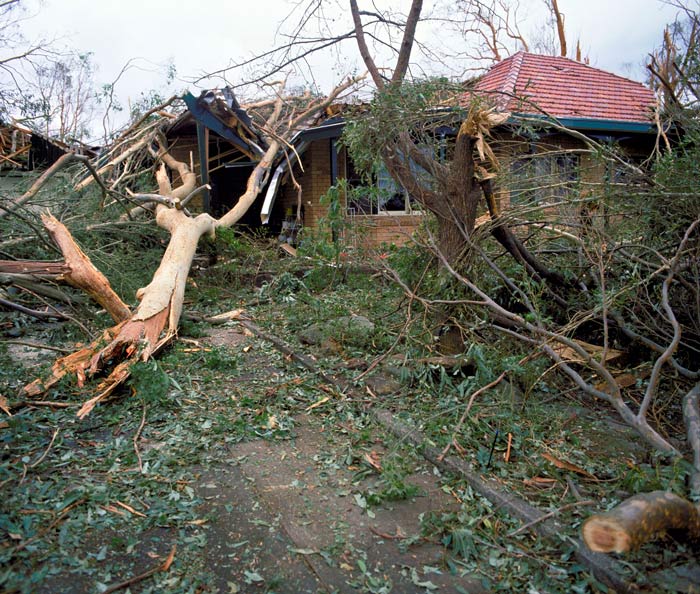
Sally’s story: “It’s worthwhile standing your ground”
Sally* claimed for damages through her insurance company after a hailstorm wreaked havoc on her house in December 2018.
“Giant hailstones broke tiles on the roof and water came into different rooms in the house,” she says.
“In one room, the light fitting fell off the ceiling and water absolutely drenched the bed underneath and some of the carpet was wet. There was water through light fittings in the lounge and dining room, some of the floor was damaged and a lot of the ceiling had to be replaced.”
Her insurer was “very good”, she says, as it responded quickly – despite the number of other policyholders making claims and the awkward timing (it happened just before Christmas).
The process was relatively smooth, says Sally, although she did have to fight to have her roof repaired rather than agreeing to a cash settlement.
“The first builders they got to come out to assess the roof said they wouldn’t fix it because it was under-pitched, so I jumped up and down,” she says. “I said that I strongly disagreed with that assessment.”
I said that I strongly disagreed with that assessment
Sally, whose house was hit by hailstorm
The insurer sent out a second building company, which repaired her roof and replaced the damaged insulation. This was important, Sally says, because if she’d accepted the cash settlement and used it to get the roof repaired independently, she’d be liable for anything going wrong with it in the future.
For those who may need to make a claim with their insurer, Sally recommends rebuffing the insurer’s “easiest option”.
“I was told I could have a cash settlement, but quite often that’s not satisfactory,” she says. “Because the insurance company paid for the repair of the roof, it’s now guaranteed for life.
“It’s worthwhile standing your ground and insisting on what you want.”
*Not her real name.

